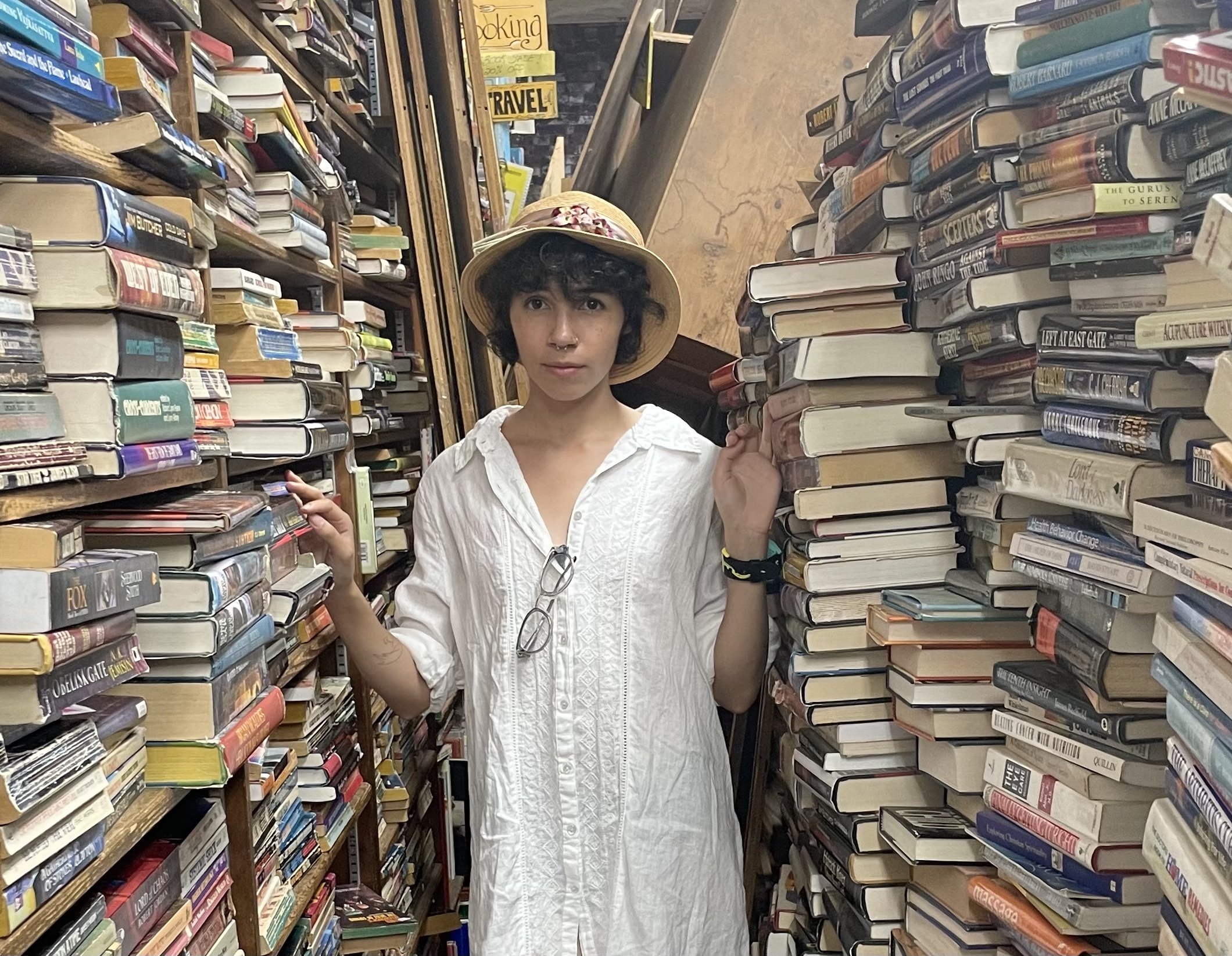A Recent Alumna Makes Her Own Path to Medical School
Blue Strickland-Sinclair ’23 stands amid a mountain of books. The aspiring doctor graduated from Chatham University with a self-designed major before entering medical school. (Courtesy Blue Strickland-Sinclair)
Blue Strickland-Sinclair ’23 started her journey to being a doctor in the sixth grade, when her family told her a story passed down through generations.
“My great-grandfather actually passed away due to a preventable illness that could have been treated had he been able to be seen at a whites-only hospital,” she said. Living in segregated Mississippi, the Black man was forced to travel to a facility in Tennessee in order to receive care.
Now, Strickland-Sinclair is headed to LECOM, the Lake Erie College of Osteopathic Medicine, after graduating from Chatham University last year. But her path to medical school was an atypical one. It was literally her own.
Though she initially enrolled at Chatham with a major in art history, Strikland-Sinclair ended up graduating with a self-designed major, creating an unusual curriculum that combined the biological sciences and the arts.
“I’ve gotten to learn about things in both disciplines that I don’t think I would’ve been able to do had I just focused on one discipline,” she said.
Strickland-Sinclair noted her immunology course, taught by Professor Caylin Winchell, as among her favorites. “I wish I could take that class five semesters in a row,” she said. “It was amazing. She’s a phenomenal educator.”
After struggling with Adobe Photoshop in one of her arts courses, a professor suggested to Strickland-Sinclair that she try printmaking. She took it on a whim and fell in love with the process, studying it for two more terms.
“Chatham has a wonderful arts program,” she said. “They have an excellent science program but also a flawless arts program.”
“Within the arts, you learn a lot of people’s behavior is driven by the culture around them, which is something I don’t think is as heavily emphasized in the sciences,” Strickland-Sinclair said. “My cultural understandings are so broad due to the fact that I had this arts curriculum, and I understand things about my patients that I maybe wouldn’t have had as deep as an understanding of if I just looked through a scientific lens.”
Strickland-Sinclair sees a diverse set of patients at Central Outreach Wellness Center, a free clinic in Pittsburgh’s North Shore where she’s worked since she was 18. The center emphasizes the holistic care it provides for patients who are people of color, immigrants, transgender, LGBTQ, or living with HIV/AIDS.
“I still am the youngest medical assistant at the practice,” she said. “Most of my coworkers are in their 30s, and I certainly was the youngest medical assistant when I started.”
With her early interest in medicine being sparked in part by a family memory of racial injustice, it’s not hard to imagine why Strickland-Sinclair was intrigued by the center’s approach. She said she appreciated the services they offered, the diverse community of patients and providers there, and the community-contributed art that lines the walls of the waiting rooms and offices.
“The way healthcare is set up within that sector is so accessible,” she said. “I really wanted to contribute to a place and patient experiences that made healthcare really accessible and not burdensome to go to the doctor’s office.”
Though she’s only just finished her undergraduate studies, she’s already thinking about how her experience at Central Outreach might inform her philosophy as she continues her journey to becoming a doctor.
“That’s something I want to keep with me, when I become a doctor, within my medical practice: that accessibility to healthcare that I feel is so often neglected with the way our healthcare system in America is designed.”
Interested in becoming a pre-med student at Chatham University? Explore the Bachelor of Biology degree or the Master of Biomedical Studies program, and read more about pre-med advising.

